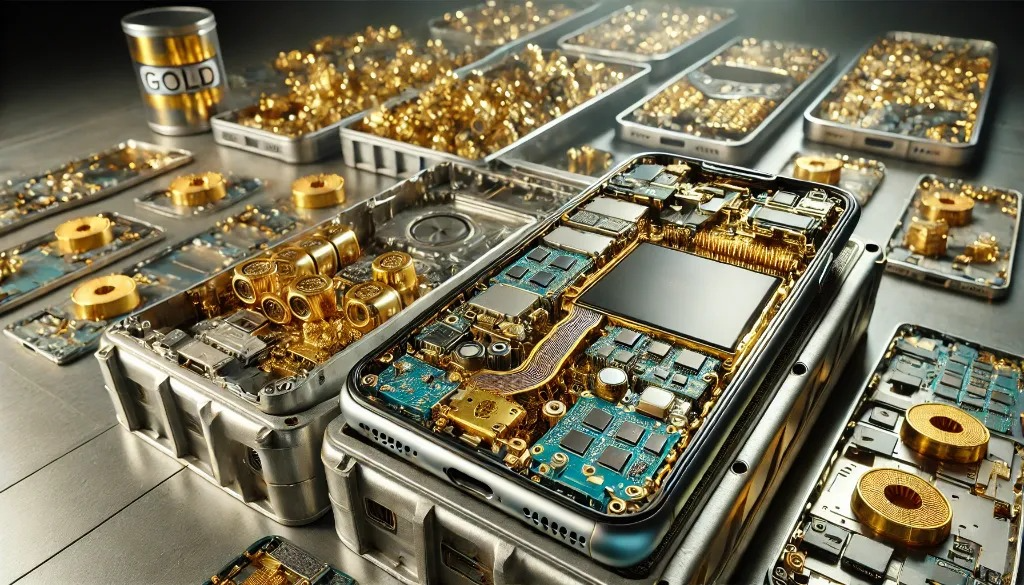
Crystal transistor from e waste breakthrough
Crystal Transistor from E Waste Marks Breakthrough in Sustainable Electronics
In a major scientific advancement poised to revolutionize both semiconductor manufacturing and environmental conservation, researchers have developed a functional crystal transistor using materials recovered from electronic waste (e waste). This innovative development, led by a multidisciplinary team from institutions in the United States, Japan, and Germany, marks a breakthrough in the effort to create high performance electronic components from recycled sources. By successfully engineering a transistor grade crystal from discarded electronics, the research paves the way for a new generation of sustainable and circular microelectronics.
The crystal transistor, a fundamental component in digital circuits that controls current flow and signal amplification, has traditionally been made using ultrapure silicon and increasingly complex compound semiconductors such as gallium arsenide or indium phosphide. Producing these materials requires intensive mining, high temperature processing, and precise chemical purification steps that consume vast resources and generate significant carbon emissions. Meanwhile, e waste continues to pile up worldwide, with over 60 million metric tons discarded annually, much of it containing valuable trace metals and semiconducting elements that remain largely untapped. The idea of reclaiming and reengineering those materials into usable transistors has long been a holy grail of green electronics.
The research team’s approach involved extracting rare elements such as indium, gallium, and selenium from shredded e waste devices, particularly old smartphones, flat panel displays, and obsolete processors. These elements, often found in tiny quantities bonded within complex circuitry, were separated through a novel low energy chemical recovery process using ionic fluids a technique that avoids the harsh acids and toxic solvents of traditional recycling methods. Once isolated, the elements were reassembled into a single crystal lattice through a carefully controlled vapor phase deposition method. This crystal, measuring just a few microns across, was then integrated into a transistor prototype with electrical properties that rivaled those of conventional devices.
What makes this achievement particularly remarkable is not just the performance of the recycled transistor, but the crystal’s structural purity and electronic consistency. Crystalline order is essential for semiconductors to function effectively; disordered atoms or contamination can lead to unreliable behavior or degraded performance. Through meticulous atomic engineering and temperature modulation during growth, the researchers were able to align atoms into a near perfect lattice, achieving electron mobility comparable to high quality commercial transistors. This level of performance was previously thought unattainable using secondary or recycled raw materials, thus defying decades of skepticism in the field.
The implications of this innovation are vast. At a technical level, it opens the door to fabricating advanced microchips using entirely reclaimed materials, potentially slashing the environmental footprint of electronics manufacturing. If scaled successfully, crystal transistors from e waste could offset the need for virgin mineral extraction, especially in regions where mining operations have devastating ecological and human impacts. Moreover, countries lacking access to rare earth supplies yet facing mounting e waste challenges could turn their waste streams into strategic technology assets. In effect, it could turn electronic garbage into geopolitical gold.
The breakthrough also arrives at a critical juncture in global sustainability policy. As governments around the world tighten regulations on e waste management and carbon emissions, industries are under pressure to innovate more sustainable supply chains. The European Union, for instance, has announced plans for a “right to repair” and mandatory recycling benchmarks for electronics, while the United States Environmental Protection Agency (EPA) has pushed for greener semiconductor sourcing strategies. The ability to make high performance transistors from old devices aligns perfectly with these agendas and could help electronics manufacturers meet future environmental compliance goals.
From an economic standpoint, the prospect of closed loop microelectronics could reshape the cost structure of chip fabrication. Traditional semiconductor production requires massive capital investment in raw material procurement and waste mitigation. By contrast, a recycling based model could dramatically reduce input costs, especially for high volume components used in consumer electronics, automotive systems, and Internet of Things (IoT) devices. Early estimates suggest that if even 30% of the necessary semiconductor material could be sourced from e waste, the global industry could save billions annually while also achieving substantial environmental gains.
Of course, challenges remain. Scaling the laboratory process to industrial levels will require further refinement in extraction efficiency, crystal growth speed, and integration with existing chip fabrication technologies. Moreover, the consistency of recovered materials varies depending on the source of e waste and its age, which could complicate quality control. Nevertheless, industry leaders are already showing interest. Several global tech firms, including a major smartphone manufacturer and a leading semiconductor foundry, have reportedly reached out to the research consortium to explore pilot production lines. Governments, too, may incentivize such developments through grants and procurement mandates, similar to how renewable energy technologies were accelerated in their early stages.
In conclusion, the creation of a functional crystal transistor from e waste is not just a scientific curiosity it is a transformative innovation that holds promise for the future of sustainable technology. By proving that high quality semiconductors can be made from discarded materials, this research challenges the status quo of electronics manufacturing and offers a tangible solution to two of the most pressing global crises electronic waste and resource scarcity. As the world grapples with the environmental toll of its digital appetite, innovations like this point to a future where technology is not only smarter but cleaner, more ethical, and circular by design.











